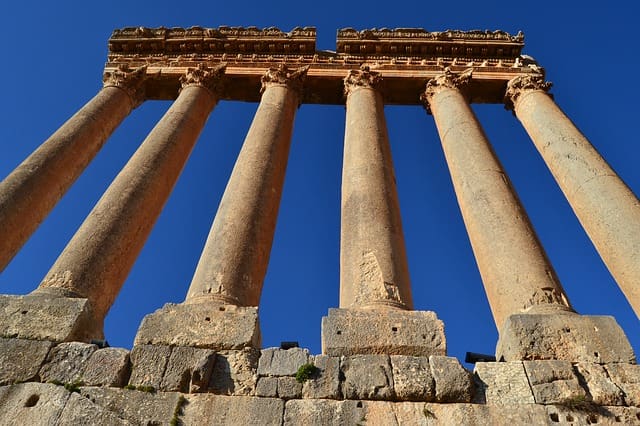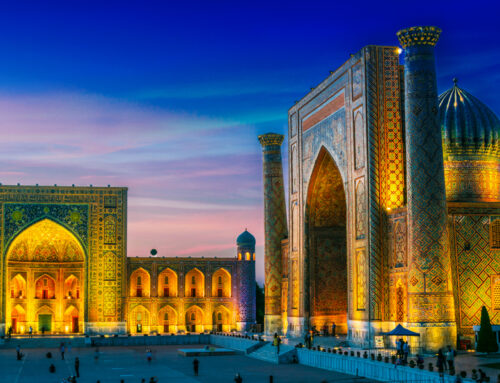13 Iconic Monuments Cloaked in Mystery

13 Historic Monuments Where Mystery Prevails
The world is a rich and wonderful place that’s full of surprises. Mysteries can be found in the most unexpected corners of the Earth – and many of them are left unsolved despite centuries of speculation. Here are 13 mysterious historical monuments, ranging from those well-loved in pop culture, to lesser known curiosities from ancient times, all waiting for your exploration:
Stonehenge
Thirty upright stones called sarsens, weighing up to 26 tons each, with a height of 10 feet tall, are arranged in a circle. The structure captures the image of the sun on the horizon perfectly during equinoxes and solstices. Speculations have been made about Stonehenge’s origins estimated to be 4,000 – 5,000 years ago, but one of the most scientific interpretations point to ancient astronomical tracking rituals.
Terra Cotta Warriors
The eerie ancient Chinese mausoleum in Xian houses clay statues of 8,000 Chinese soldiers and their horses buried within the Emperor’s tomb. It’s amazing to learn that each statue is so life-like and intricately detailed, each believed to be a replica of an actual warrior. First excavated in the 70s, these interesting statues are surrounded by even more intrigue because of the rumors that a river of mercury also accompanies the Emperor resting place. Only a small portion of the tomb has been excavated with many mysteries yet to come.
Great Pyramid of Giza
- Also known as the Pyramid of Khufu, the Great Pyramid of Giza is believed to serve as the burial ground for one of the Egyptian Pharaohs, Khufu. Like many ancient mysteries, it also presents a wonder to pre-modern technology – in fact, it is literally one of the Seven Wonders of the World. It remains a mystery how the pyramid was built, how blocks weighting up to 50 tons were moved, and how inhabitants of 2500 BC had the skills to design and build them.
Stones of Baalbek
The monolithic structure of the stones of Baalbek, Lebanon, has puzzled experts for centuries. Considered part of the largest Roman Temple in all of history, the Stones of Baalbek weigh 1000 tons each, where all other famous historical temples shrink in comparison, the Parthenon of Athens and the Pyramid of Giza included.
- Underwater Yonaguni Ruins
8,000-year-old ruins found submerged near the south of Yonaguni, Japan, have raised interest towards underwater ruins. Discovered in 1995, the Yonaguni ruins were initially thought to be a natural phenomenon carved by the waves of the ocean. This has been countered by new evidence, which shows that the ruins are man-made, due to the intricate structure of its remaining architecture.
Ancient Rock Ship of Asuka
This mysterious space-age-like creation has been speculated to have been used for agriculture. However, the way it’s built remains shrouded in mystery. Also known as Masuda-no-Iwafune, this ancient rock ship made completely of granite appears to be an impossible feat.
Easter Island Heads
Reasons as to why and who built the Easter Island statues have yet to be uncovered. The most recent discovery about the statues, found in a remote island in the South Pacific Ocean, is that they also have bodies. However, while this has revealed further answers about the nature of their creation, it has also raised plenty of questions in the process.
Angkor Wat
The amazing ancient city of Angkor Wat in Cambodia had remained a secret in the Western world for many centuries, until it was found in 1860 by missionaries in the Cambodian jungle. The complex roadways and structures of this ancient city is telling of the type of craftsmanship the Khmer people used to build it.
Plenty of research shows that the city was originally used as a religious site for the god Vishnu. After the mysterious collapse of the Khmer civilization, Angkor Wat also fell into ruin and obscurity until its re-discovery.
Georgia Guidestones
Standing at sixteen-feet tall, these guidestones have been called such because they track the movement of the North Star. Inscribed with instructions on how to rebuild a fallen civilization in several languages including Swahili, Hindi, and Egyptian hieroglyphics, the identity of who built the guidestones, and for what real purpose remains a mystery.
Crop Circles
Is it real or a hoax? Crop circles have been commonly appearing in wheat fields since the 1970s, particularly near cultural landmarks like the Stonehenge. Some claim that these recurring patterns as hoaxes performed by outliers, but other theorists use these to point to possible intelligent life form outside the Earth.
Heraklion

(Image: http://cdn.earthporm.com/wp-content/uploads/2014/07/Egyptian-City-2.jpg)
An ancient city submerged in the depths of the ocean, Heraklion, also known as Thonis to the Egyptians, was once also thought to be an Atlantis-like myth. Its excavation from underwater reveals several important ancient artifacts that have been buried with it, including relics of gods and goddesses, as well as an unnamed Egyptian Pharaoh and mummified sacrificial offerings.
Costa Rica Spheres
The mysterious spheres of Costa Rica were assumed to have been created sometime before the onset of the Spanish inquisition in Latin America. These round structures made of solid granodiorite, held unknown purposes for the ancient peoples who hewed them from large boulders. The real purpose of these monuments is even more difficult to decipher since most of them have been destroyed or displaced since their discovery in the 1940s.
Sphinx of Giza
This monumental structure, also found in Giza, Egypt, is yet another testament to the wonders of ancient engineering. Believed to have been commissioned by the sons of the Pharaoh Khufu, the same leader who built the Great Pyramid of Giza, the sphinx has become a favorite image in popular culture and in recent times.
Its badly battered exterior is currently undergoing renovation, but the mysterious secrets of its inner rooms and passageways are yet to be fully explored.
****************************************
About The Author: Stacey Marone is an editor at Scholar Advisor. Her passions involve travel and recording her trips to new destinations. She enjoys beaches and long road trips to the countryside. Currently doing freelance, Stacey hopes to turn her travelogues into publishable content to share with other adventure-seekers someday.
*****************************************
See Our Pinterest Boards:

















